
As busy gardeners, we know the more that gets done in fall, the easier spring will be.
Get as much done this fall to lessen the load. Don’t worry. There will be a plethora of activities next spring.
Perennials Love a Head Start
Perennials begin growing early, some even before the ground can be worked in spring.
In addition to the gorgeous spring blooming bulbs you can plant this fall, a huge variety of perennials benefit from fall planting.
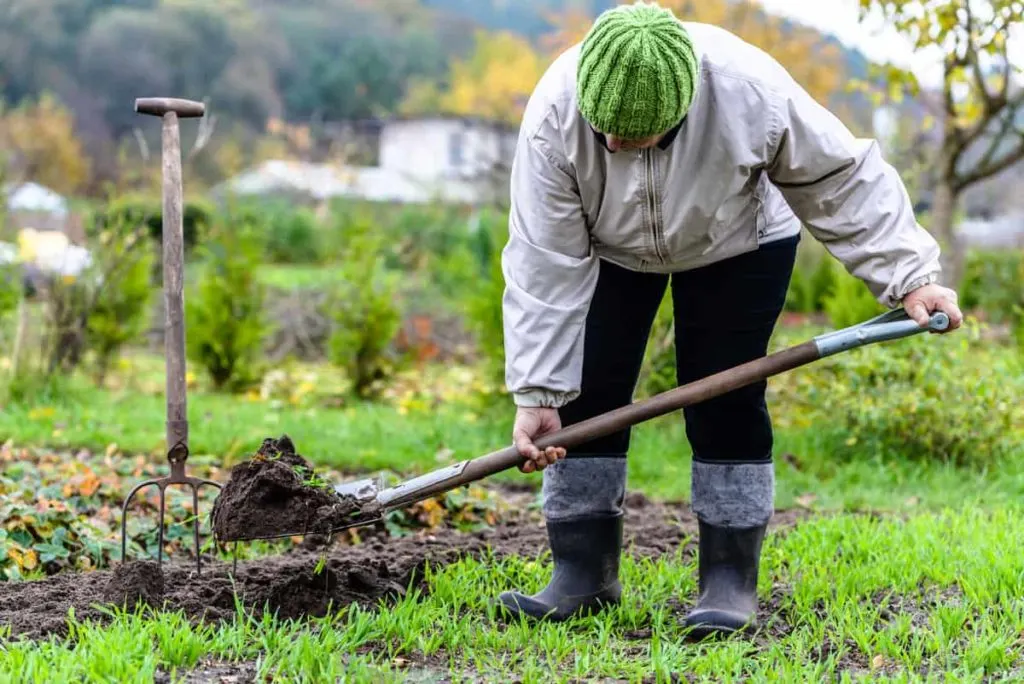
8 Benefits to Planting Perennials This Fall
1. Your Favorite Perennials at Great Prices
A boon of deals is available at garden centers at the end of the growing season. Perennials go on sale after they’ve done their beauty duty for the year.
If they’re still healthy, but not flying off the shelves just because they’ve finished blooming, take them home. They’ll be ready to show off their stuff in your garden next year!
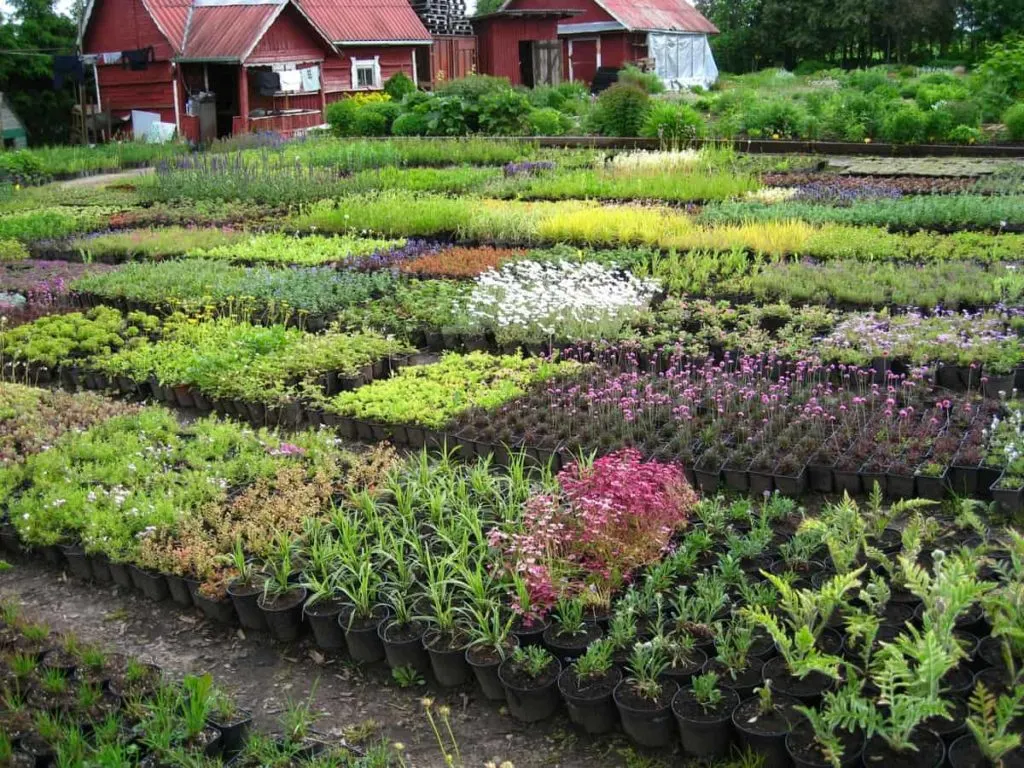
2. Cost-Effective Bare Root Options
Moist conditions and lower temperatures in fall are perfect for transporting and planting bare root perennials.
Not only are bare root perennials often less expensive but they also come in spectacular varieties and options.
Bare root perennials may also be available in mature 2 to 3-year-old plant stock. This may shave off a couple of years of waiting for your perennials to reach their glorious maturity.
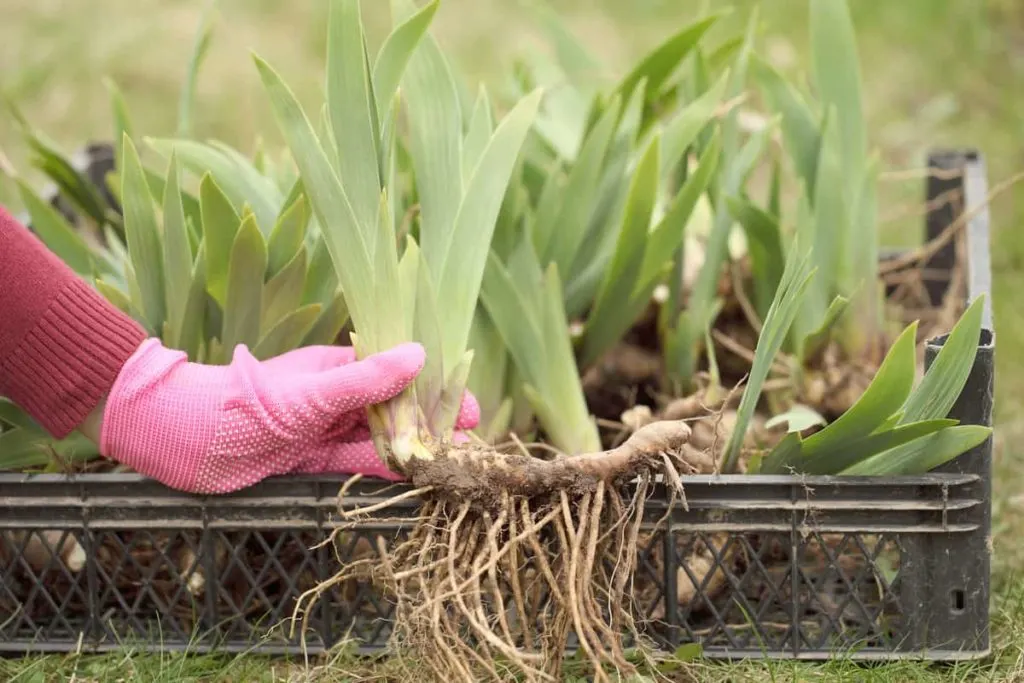
3. Prime Growing Season for Establishing Roots
In spring and summer, most perennials work hard to send up lush colorful growth. Fall is the time when all that hard work pays off!
In fall, perennials put all their energy into root growth, a plant’s way of preparing for winter.This in turn sets them up to sprout more lush colorful growth next spring.
4. Warmer Fall Soils – Faster Root Growth
Soil temperatures are significantly warmer in fall than during spring thaw. This helps perennials develop roots much faster.

5. A Lot Happens for Soil During Winter
Depending on the climate, winter is a time with excess moisture, rain, and snow.
Winter is also a time when soil particles and detritus break down, becoming much-needed nutrition for plants.
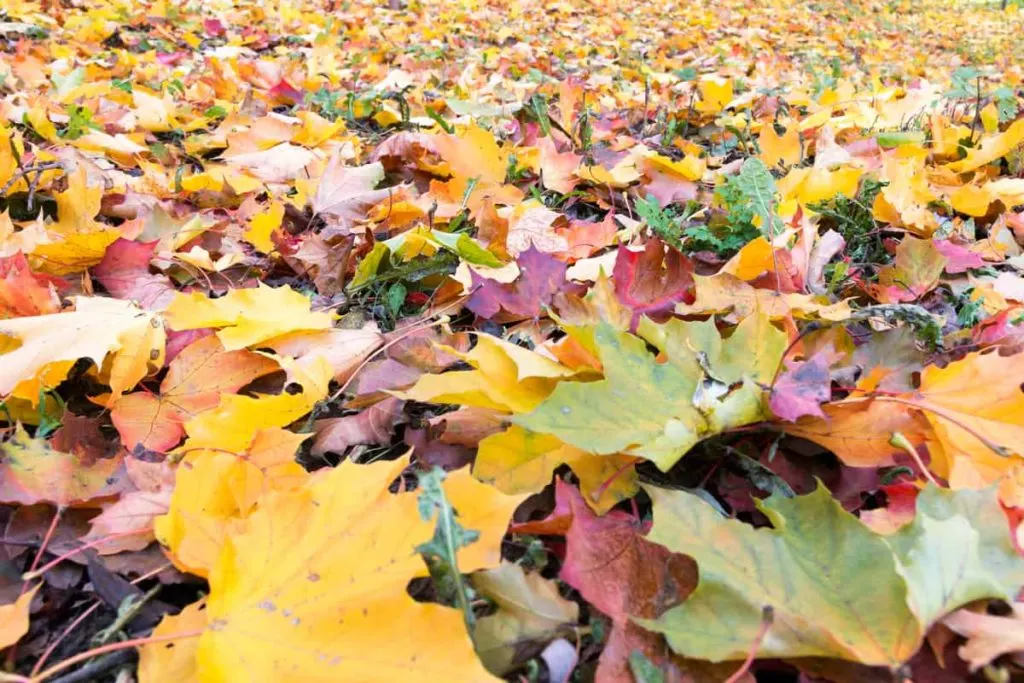
Fall-planted perennials have the opportunity to soak in all the extra moisture and nutrients, while they prepare for next spring’s growth.
Fall planting also helps drought-tolerant plants become better established for times without moisture.
6. Eliminate Spring Transplant Shock
In spring, the garden center’s temptations are abundant! Those greenhouse-grown lush perennials may take a deep decline when put out in cold damp spring earth.
On the other hand, planting perennials in the fall allows them to get established, become hardy, and perform at their finest in any spring weather.
7. Many Fall-Planted Perennials are Long-Living
A jump start on long-living legacy perennials is possible with fall planting.
Many fall-planted perennials can be enjoyed for decades once established.
8. Ahead of The Game
Planting in the fall gives a huge head start on spring.
Aren’t there enough fun things to do in the garden in spring, with starting the vegetable patch and planting annuals?
All while enjoying watching the fall-planted perennials grow.
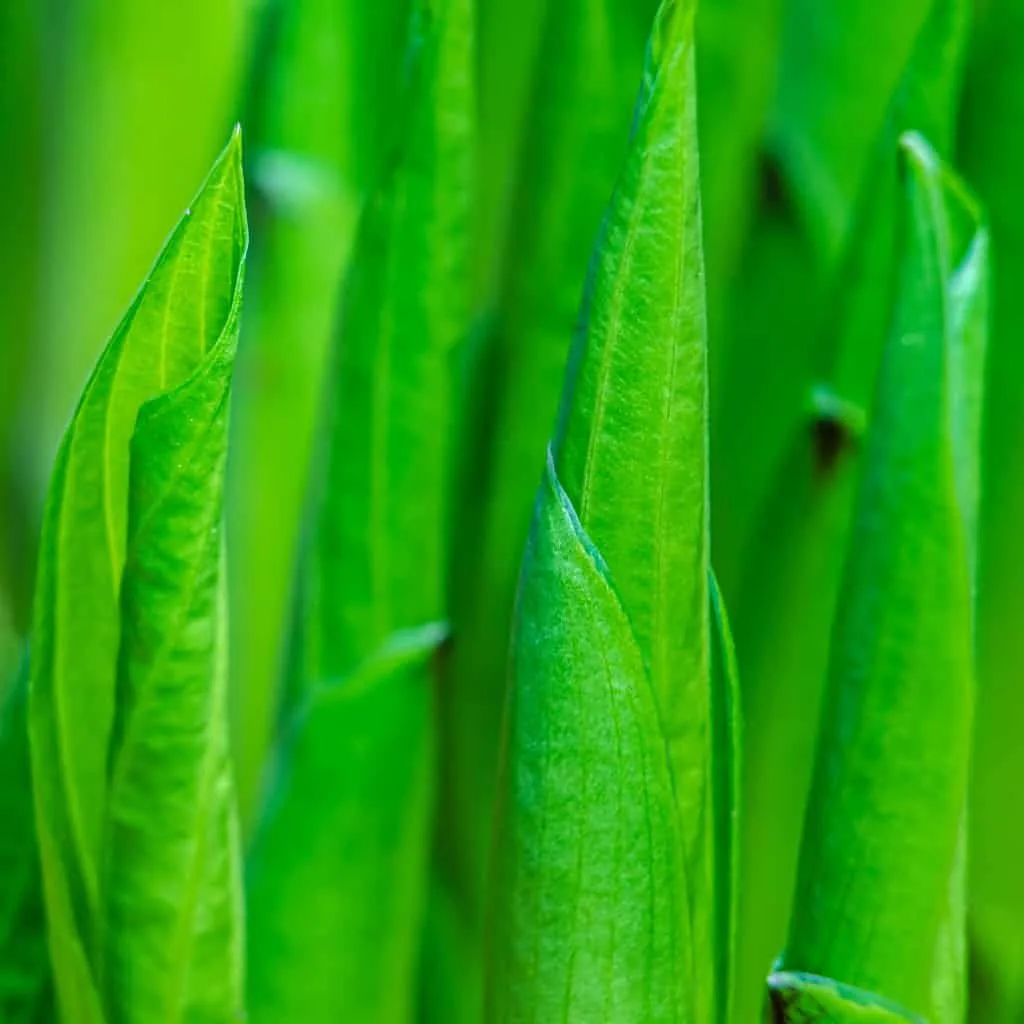
Fall Planting Tips
- Space perennials with their full size at maturity in mind.
- Plan the fall planting about 4 to 6 weeks before hard frosts or the ground freezes.
- Bare root perennials should be planted soon after you bring them home. It won’t help them if they dry out too much.
- Water newly planted areas thoroughly. This will help nutrient-rich soils settle around the roots. It will also help insulate the plant from dry and frozen air pockets in the soil.
- Mulch perennials with compost, leaf debris, or straw. This way perennials are more resilient through any freeze-thaw cycles during the winter months.
- Keep to hardy varieties for your area. Experimenting with tender plants is more successful in springtime.
- Minimize fertilizing. Fertilizers will push tender lush growth. The idea of fall planting is to allow plants to go into winter dormancy and fertilizer will confuse them, encouraging them to make new above-ground growth.
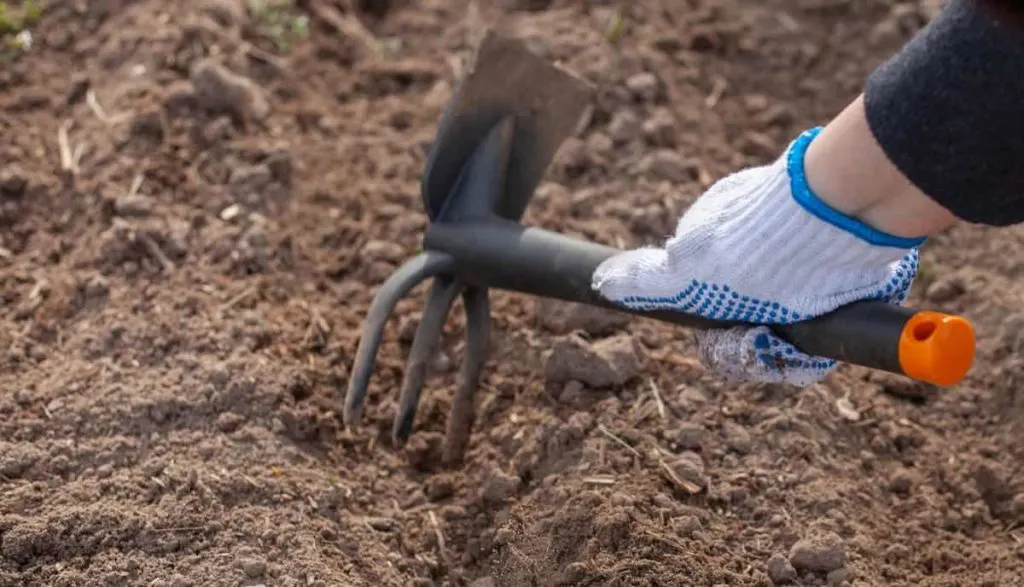
23 Beautiful Perennial Flowers To Plant In Fall
There are huge choices of perennials that are excellent to plant in the fall. For the best success, keep to varieties that are hardy in your climate zone. Spring and summer bloomers may take to fall planting exceptionally well.
1. Astilbe (Astilbe)
Standout Feature: Fern-like foliage is topped by feathery soft plumes of pink, purple, red, or white which perform best in light shade to filtered sun.
Mature Size: 1 to 4 feet tall.
Bloom Time: Early summer.
Hardiness Zone: 3 to 8.
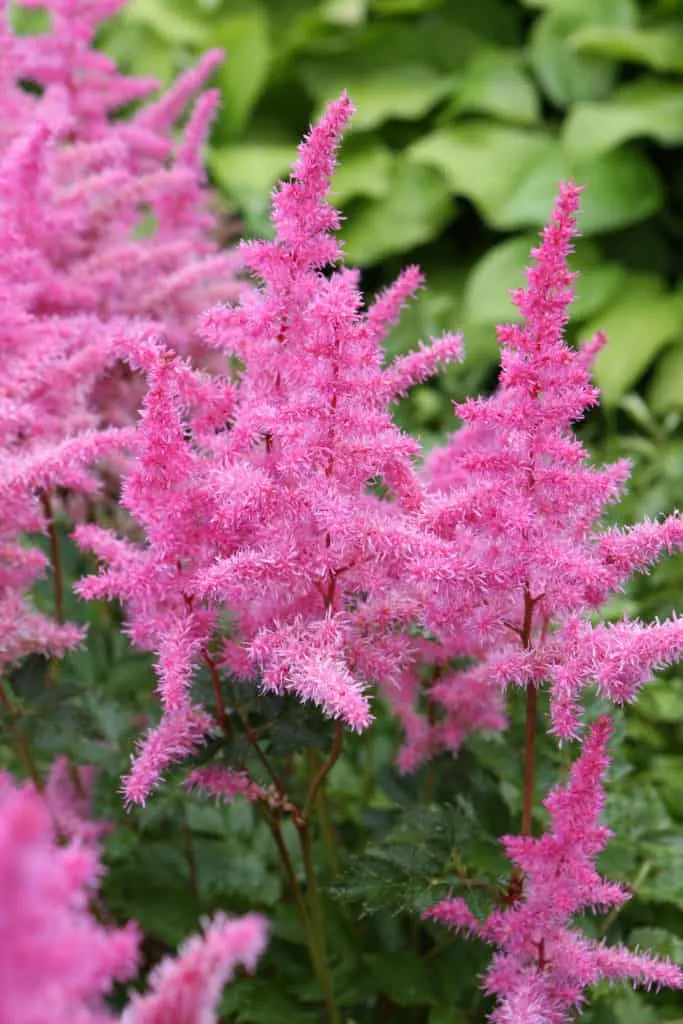
2. Balloon Flower (Platycodon grandiflorus)
Standout Feature: Great for kids, the unopened buds look like balloons in this easy-to-grow, clump-forming plant that bears 2-to-3-inch purple/blue flowers.
Mature Size: 2 feet tall by 1 foot wide.
Bloom Time: Summer.
Hardiness Zone: 3 to 8.
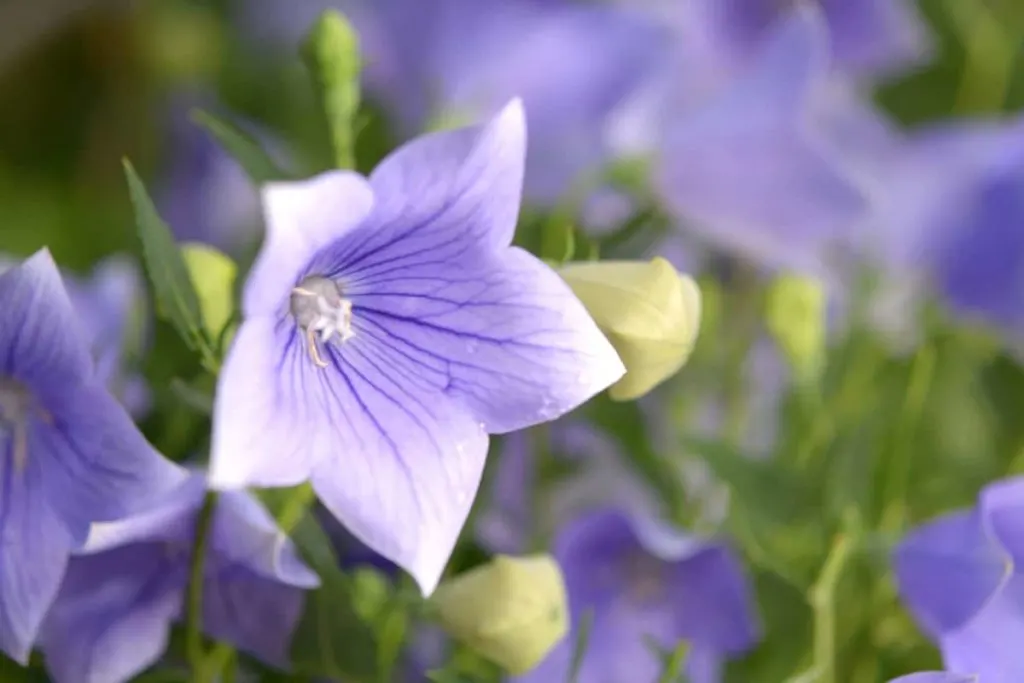
3. Bearded Iris (Iris germanica)
Standout Feature: Drought tolerant, long-lived perennial loves full sun. It is available in a spectacular variety of bloom sizes and colors. This rhizomatous plant with upright sword-shaped leaves is best planted level with the soil. If the rhizomes are fully submerged in the soil, the plant fails to bloom.
Mature Size: 12 to 40 inches tall.
Bloom Time: Late spring.
Hardiness Zone: 4 to 9.
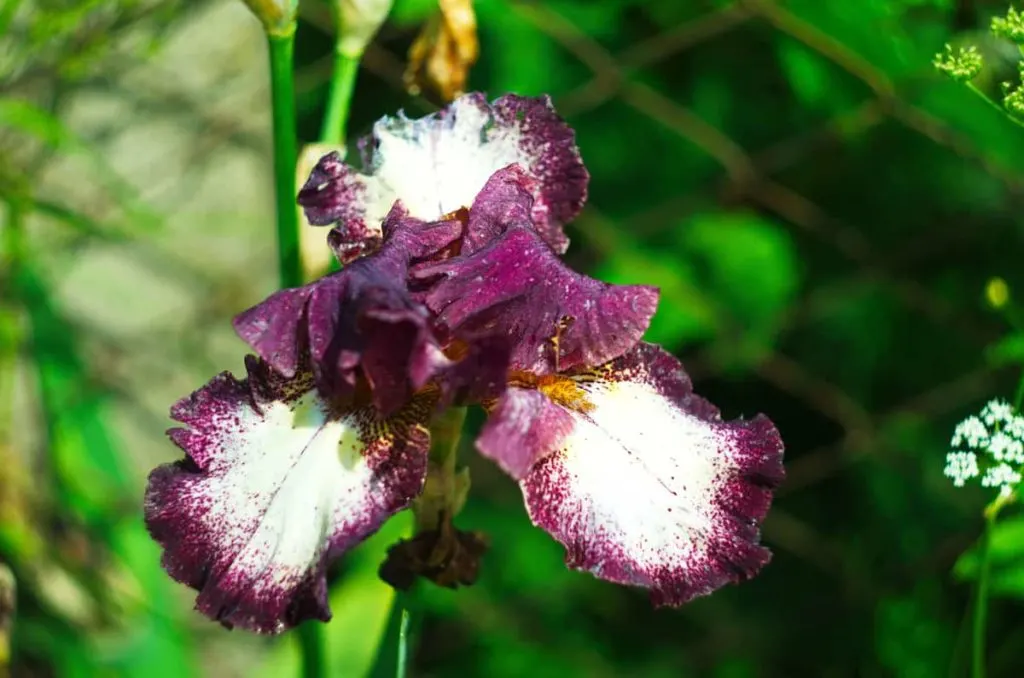
4. Bee balm (Monarda)
Standout Feature: Vibrant red, purple, or pink blooms adorn this North American native plant that thrives in full sun to part shade.
Mature Size: 3 to 4 feet tall and wide with dwarf varieties available that reach just 15 inches.
Bloom Time: Mid to late summer. Deadheading encourages blooms.
Hardiness Zone: 3 to 9.
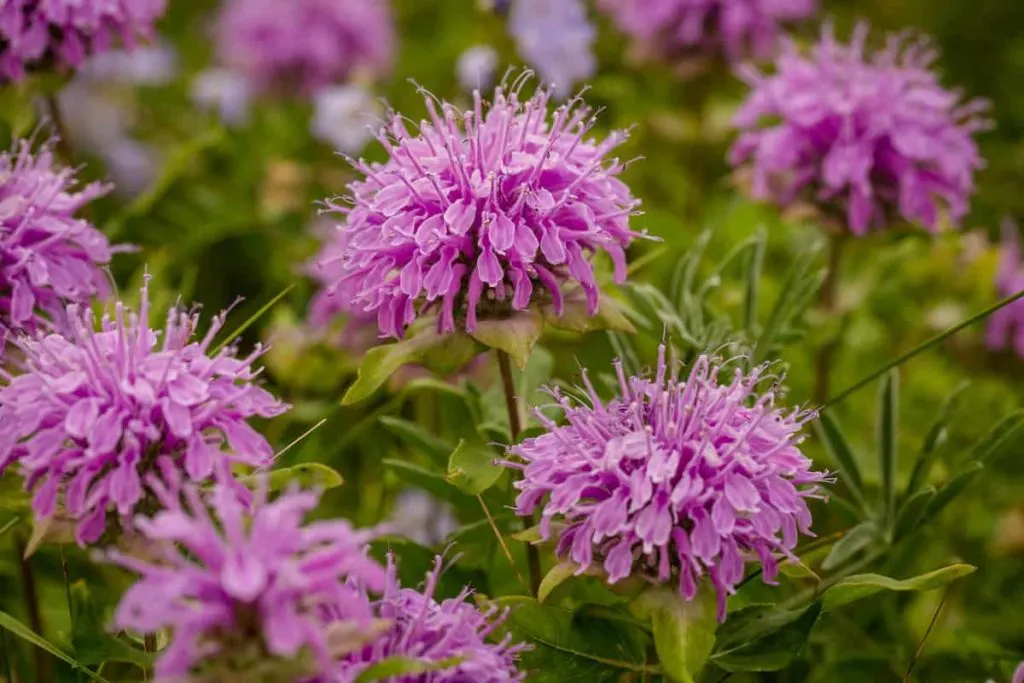
5. Elephant’s Ears (Bergenia)
Standout Feature: Thick glossy leathery leaves are clump-forming. They make an excellent ground cover that produces large white, pink, or red flower clusters for additional interest.
Mature Size: From 6 inches to 3 feet tall.
Bloom Time: Early spring.
Hardiness Zone: 3 to 8.
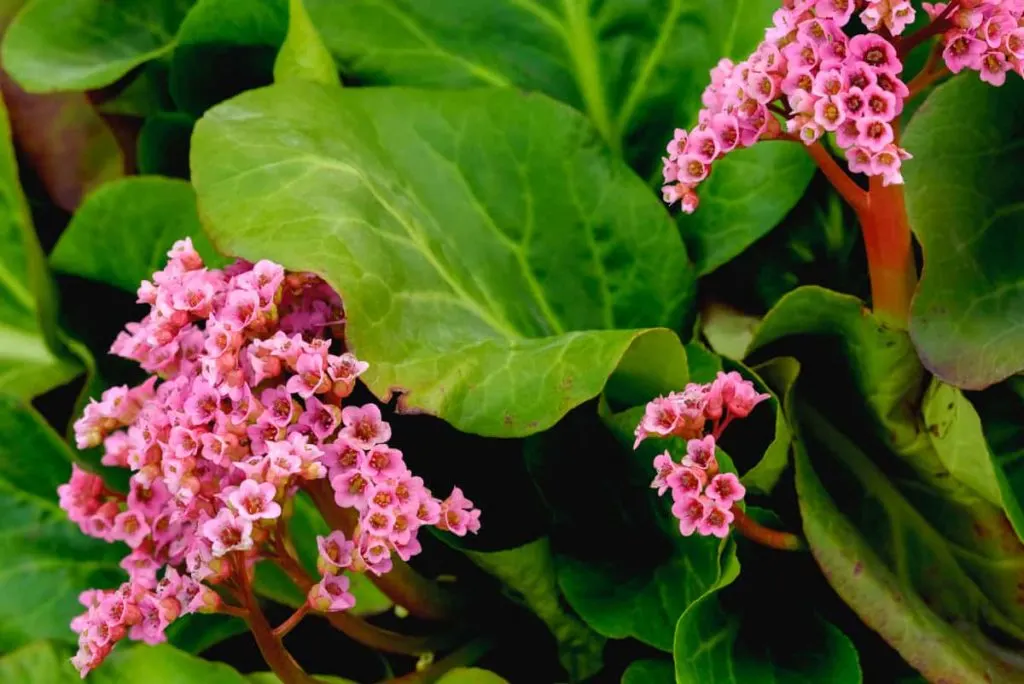
6. Bleeding Heart (Lamprocapnos)
Standout Feature: Pendulous heart-shaped flowers dangle delightfully from gracefully arching stems in this shade-tolerant, long-loved perennial favorite.
Mature Size: 1 to 3 feet tall and wide.
Bloom Time: Mid to late spring for 6 to 8 weeks.
Hardiness Zone: 3 to 9.
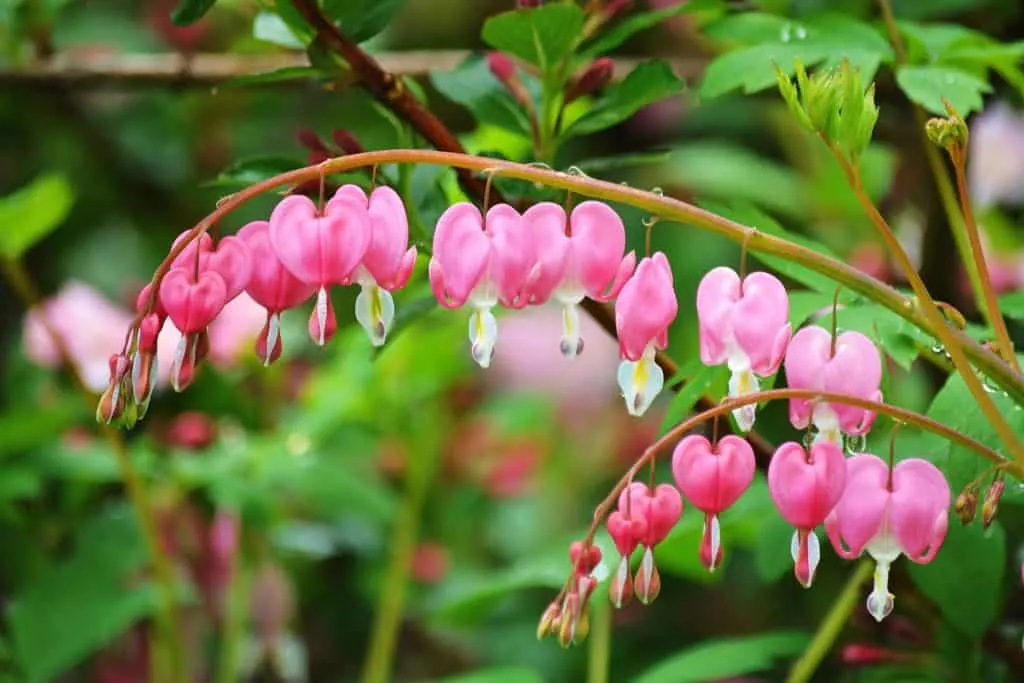
7. Brunnera (Brunnera)
Standout Feature: Shade-loving groundcover with hairy foliage and sprays of blue forget-me-not-style flowers.
Mature Size: 1 ½ feet tall spreading up to 2 feet.
Bloom Time: Early to midspring.
Hardiness Zone: 3 to 7.
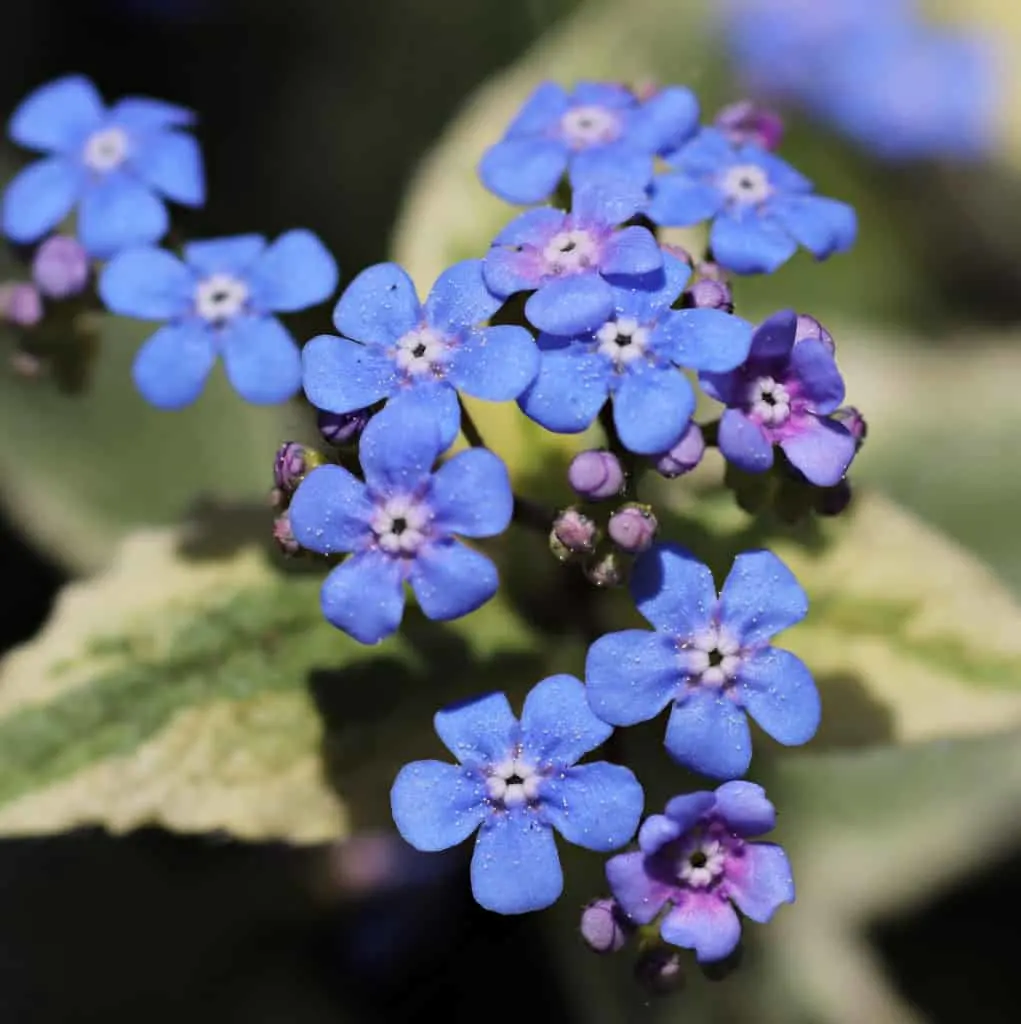
8. Columbine (Aquilegia)
Standout Feature: Unique flower favored by children, this woodland wildflower comes in blue, white, pink, red, yellow, and orange with interesting contrasting shades of their spurred petals.
Mature Size: 1 to 3 feet tall.
Bloom Time: Spring.
Hardiness Zone: 3 to 8.
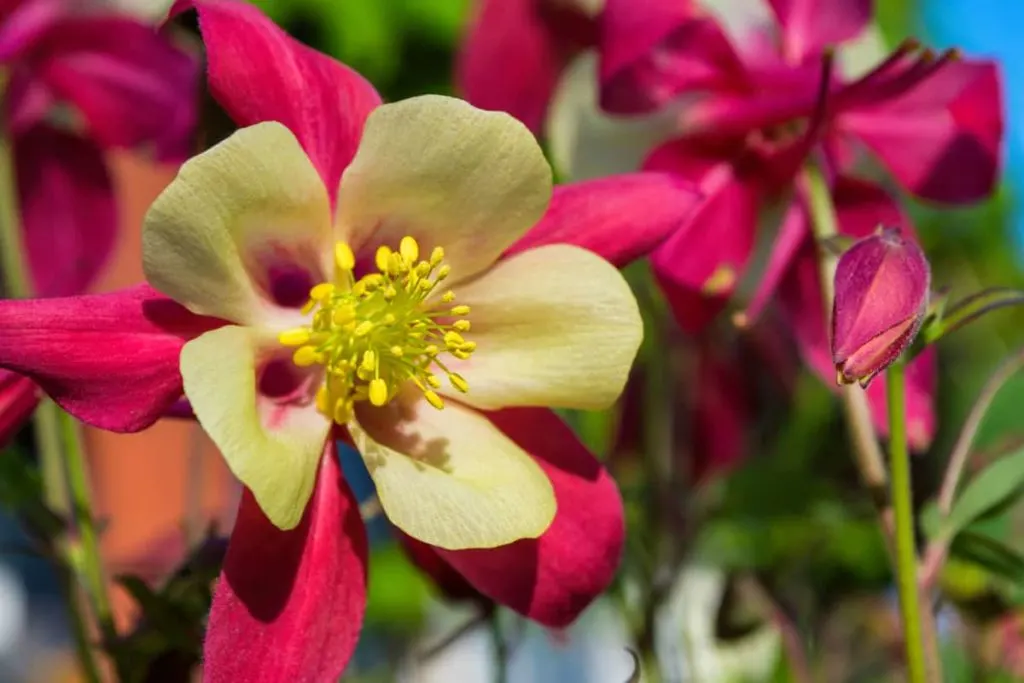
9. Daylilies (Hemerocallis)
Standout Feature: The graceful arching grass-like leaves are clump-forming. They are the perfect understory to the multi-blossom stems which hold colorful, large, gorgeous flowers which open for just one day each.
Mature Size: 1/3 of a foot to 8 feet in height.
Bloom Time: Summer.
Hardiness Zone: 4 to 9.
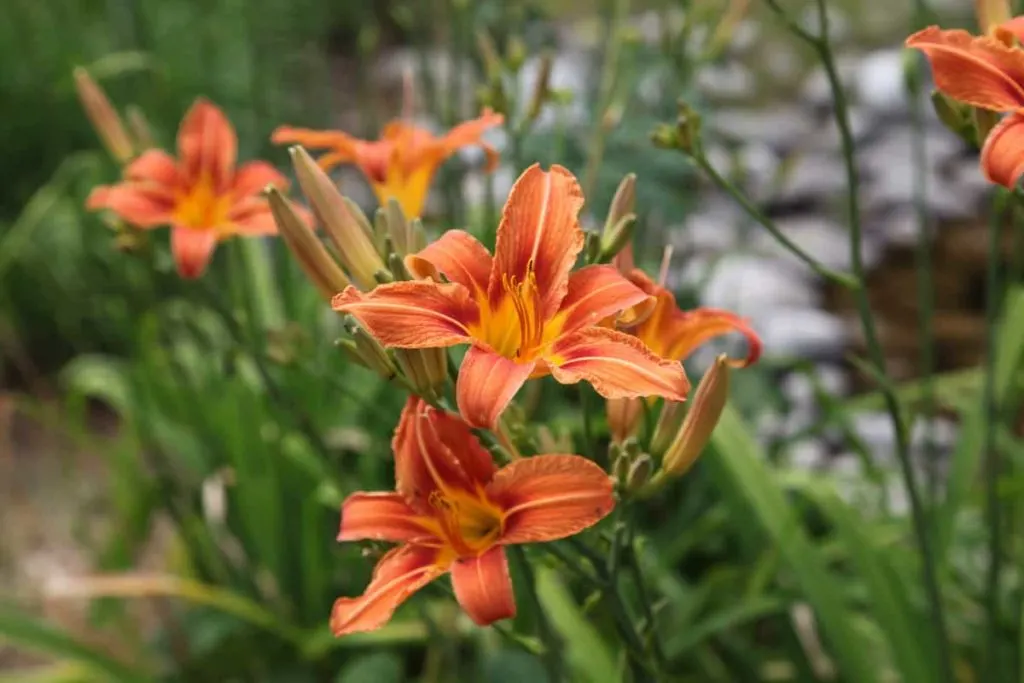
10. Dianthus (Dianthus)
Standout Feature: With over 300 species to choose from, the clove-scented flowers are familiar as Pinks, Carnations, and Sweet Williams among others.
Mature Size: Tiny from under 6 inches to large varieties 1 to 3 feet tall.
Bloom Time: Spring and summer depending on the variety.
Hardiness Zone: 3 to 9.
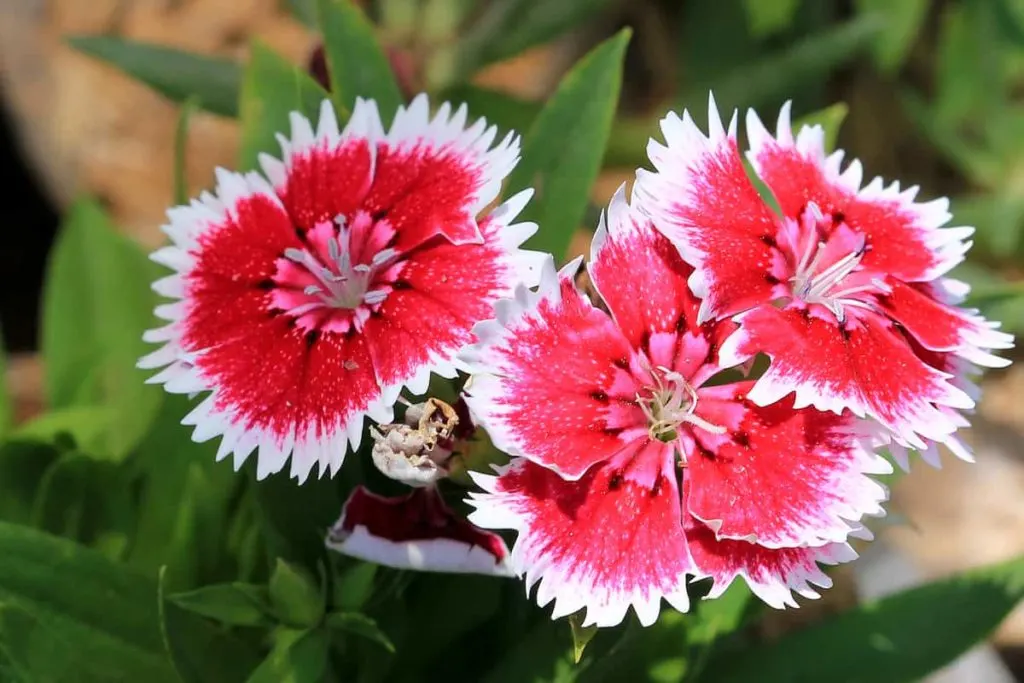
11. Blanket Flower (Gaillardia)
Standout Feature: Once forming large colonies blanketing the prairies of North and South America, the large, multicolored, daisy-like flowers bloom in warm tones of yellow, orange, and red. Perfect for naturalizing.
Mature Size: 1 to 1 ½ feet tall.
Bloom Time: Summer to early fall.
Hardiness Zone: 2 to 11.
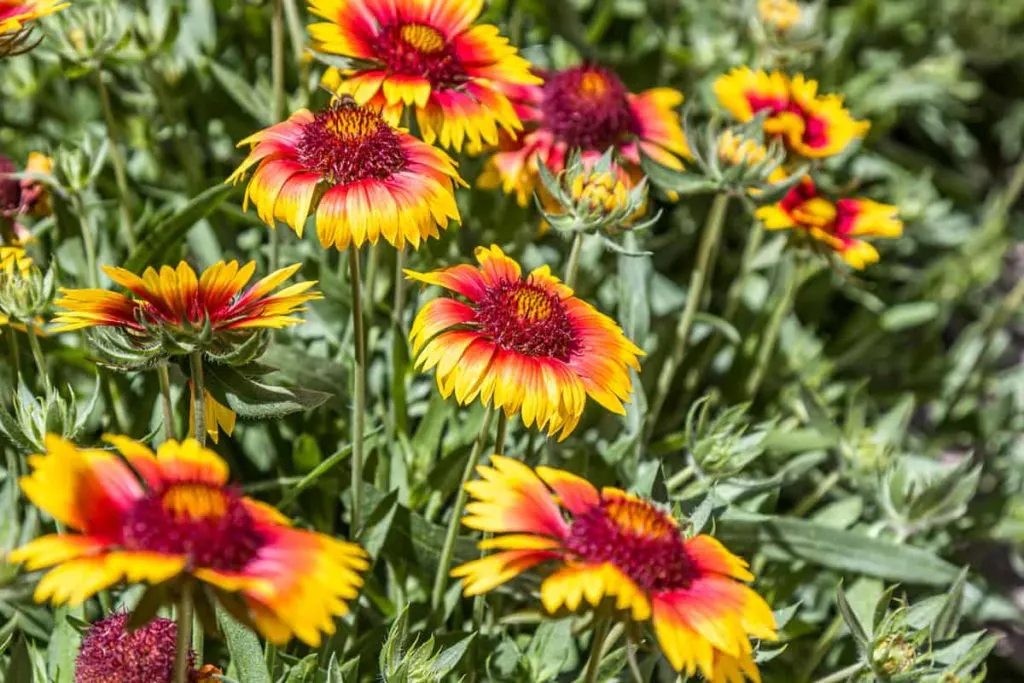
12. Hosta (Hosta)
Standout Feature: Choice and variation are the addictive qualities of these shade-tolerant foliage plants. Hosta boasts 70 species with over 3000 registered cultivars.
Mature Size: Miniature hostas may be as small as 2 inches tall, with giant varieties topping out at 5 feet.
Bloom Time: Summer.
Hardiness Zone: 3 to 8.
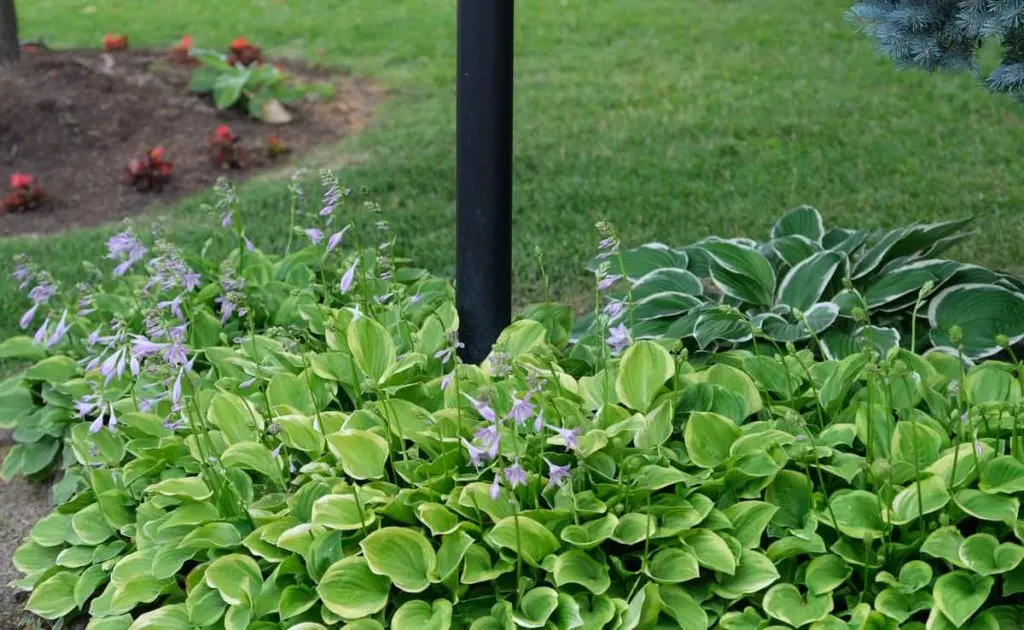
13. Blazing Star (Liatris)
Standout Feature: The flamboyant red to purple flower spikes rise above this upright, clump-forming North American native plant which thrives in moist low-land, and meadow-like conditions.
Mature Size: 2 to 4 feet.
Bloom Time: Summer.
Hardiness Zone: 3 to 8.
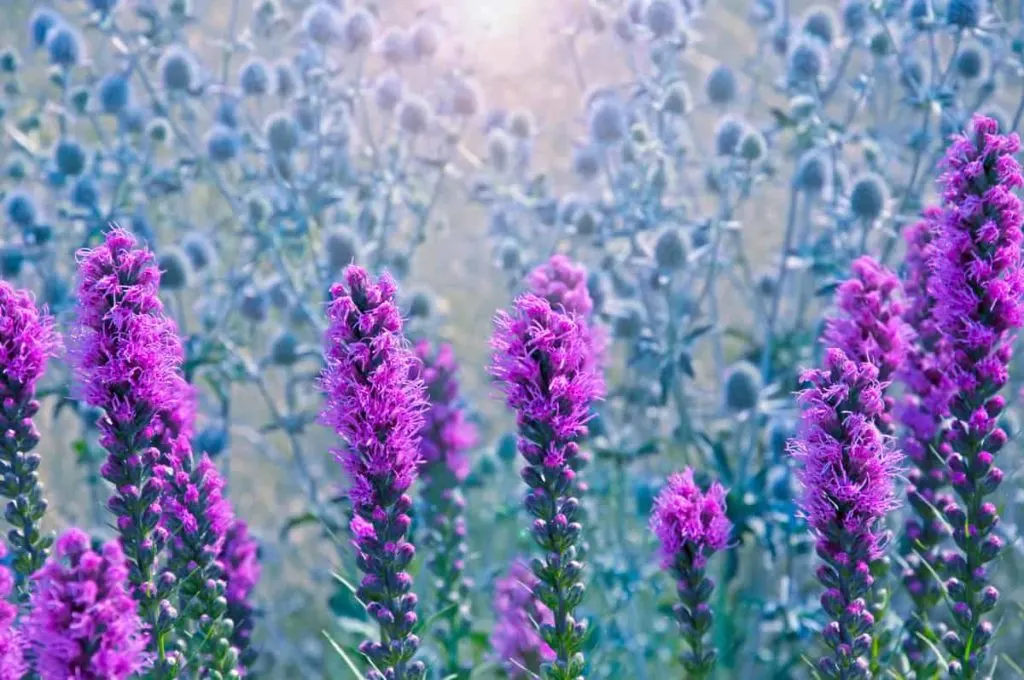
14. Lily (Lilium)
Standout Feature: One word. Gorgeous. Lilies surprise with their true ease of care combined with extraordinary fulfilling giant, fragrant, colorful blooms. They grow from bulbs, perfect for planting in the fall.
Mature Size: 2 to 6 feet tall.
Bloom Time: Spring to early fall, depending on the variety.
Hardiness Zone: 4 to 9.
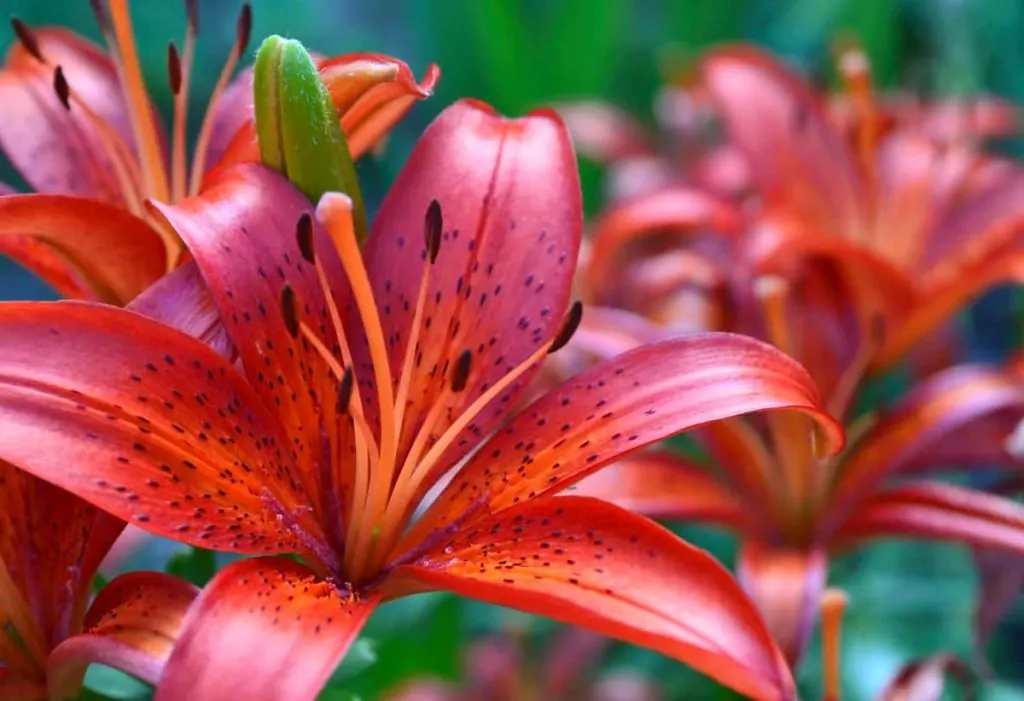
15. Monkshood (Aconitum)
Standout Feature: Superiorly deer and rabbit resistant, monkshood rise in spring so quickly you can almost watch it grow. The blue to purple hooded flowers emerge in whorls up the tall durable spikes. A fascinating place to watch bees of all varieties climb inside the helmet-like flowers.
Mature Size: 2 to 4 feet tall, spreading 1 ½ foot wide.
Bloom Time: Early to midsummer.
Hardiness Zone: 3 to 7.
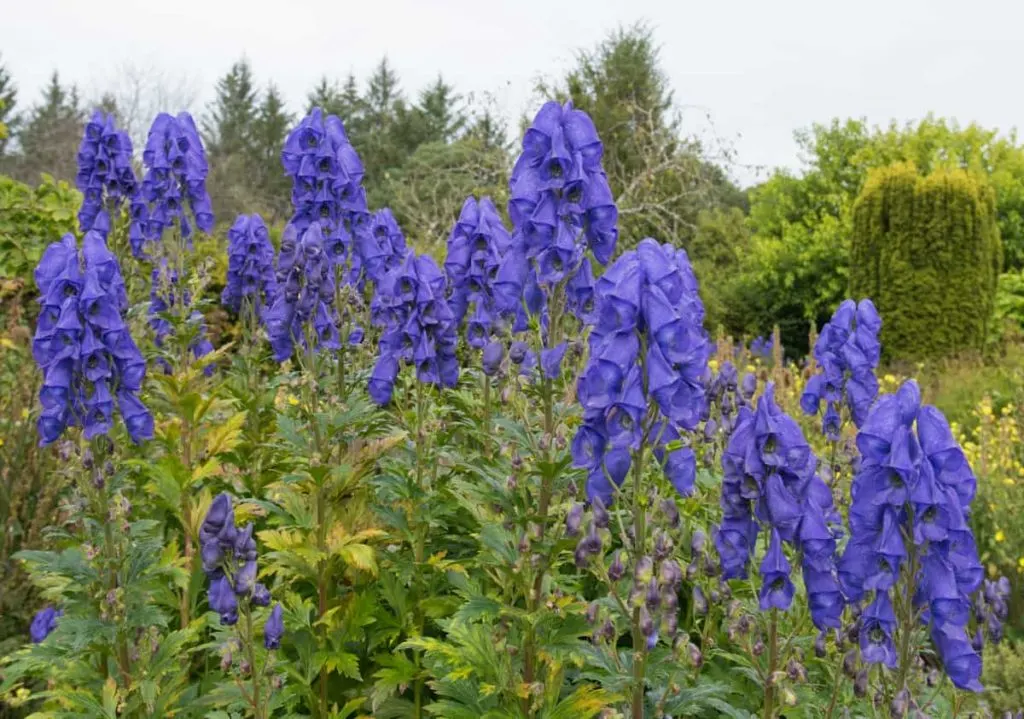
16. Oriental Poppies (Papaver orientale)
Standout Feature: Large, paper-like petals are just one fascinating feature of these clump-forming perennials with thistle-like, hairy foliage. The alien-like seed heads are perfect for dried flower arrangements.
Mature Size: Up to 3 feet tall and 2 feet wide.
Bloom Time: Spring to early summer.
Hardiness Zone: 3 to 9.
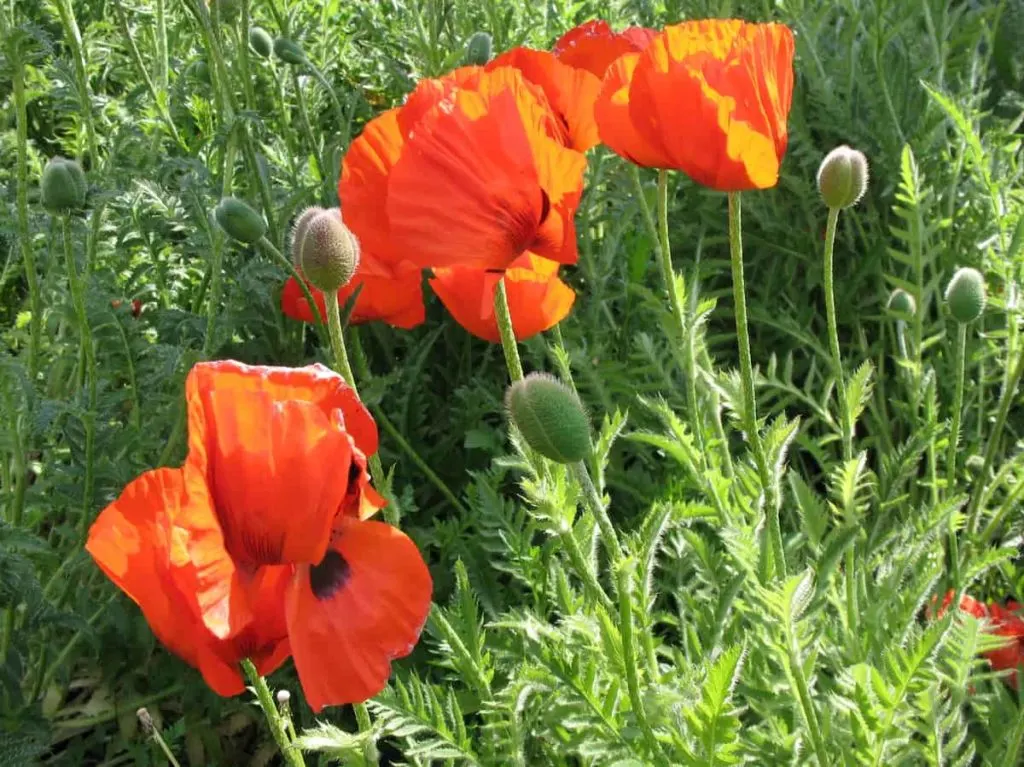
17. Beardtongue (Penstemon)
Standout Feature: Attractive to birds and butterflies, the five-petaled tubular flowers are available in a wide range of colors such as blues and purples as well as reds and oranges. There are many species native to North America so be sure to choose a perennial variety hardy to your climate.
Mature Size: Depending on the variety, some grow just 6 inches tall while others reach 8 feet in height.
Bloom Time: Spring.
Hardiness Zone: 3 to 9.

18. Peony (Paeonia)
Standout Feature: Giant, fragrant blossoms on this old-fashioned favorite. Peonies are perfect for fall planting. The tuberous roots of peony are delicate and brittle. They are much easier to transplant in the fall. In spring, there is a risk of damage to early growth. You can also grow peonies in containers.
Mature Size: 3 to 4 feet tall.
Bloom Time: Late spring to early summer. Plant a couple of varieties to spread out the glorious peony blooming season.
Hardiness Zone: 2 to 8.
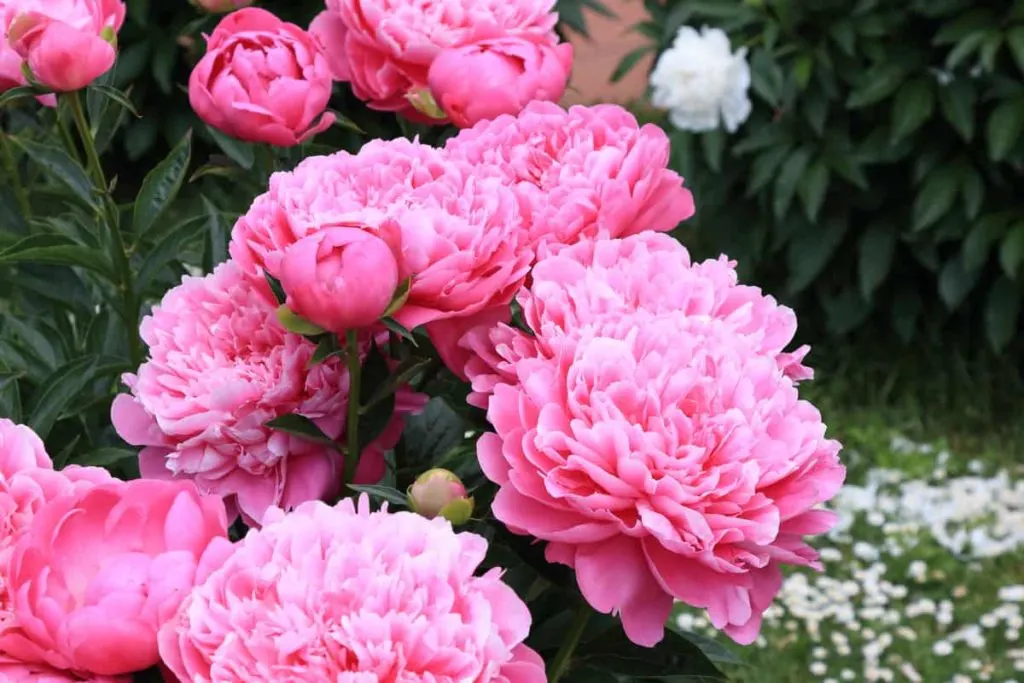
19. Perennial Sunflowers (Helianthus)
Standout Feature: Perennial sunflowers bloom year after year. They are available in diverse varieties and make wonderful additions to wildflower, edible gardens, and pollinator gardens. As North American native plants, they naturalize beautifully also.
Mature Size: 3 to 8 feet tall.
Bloom Time: Summer.
Hardiness Zone: 3 to 9.
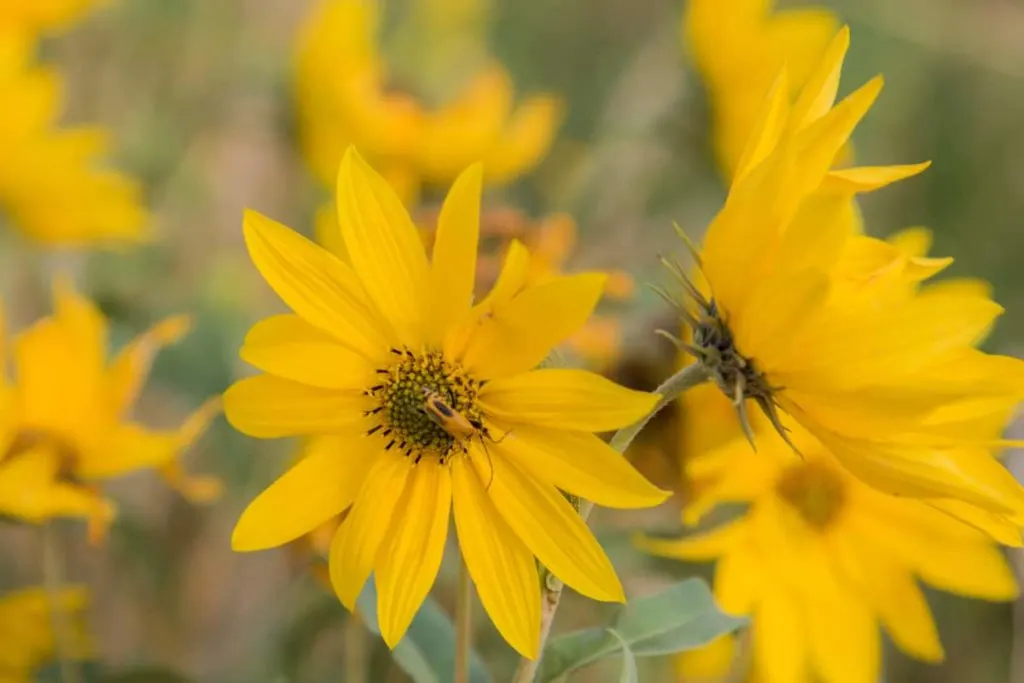
20. Phlox (Phlox)
Standout Feature: Tough, prolific, colorful bloomers in shades of white, red, pink, purple, mauve, or blue. Phlox grow in many forms from creeping groundcovers of moss phlox to upright garden spectaculars of garden phlox.
Mature Size: Creeping phlox may spread up to 2 feet but only reach 6 inches in height. Garden phlox varieties may grow 2 to 4 feet tall.
Bloom Time: Creeping phlox bloom in early spring while garden phlox bloom in mid to late summer.
Hardiness Zone: 3 to 9.
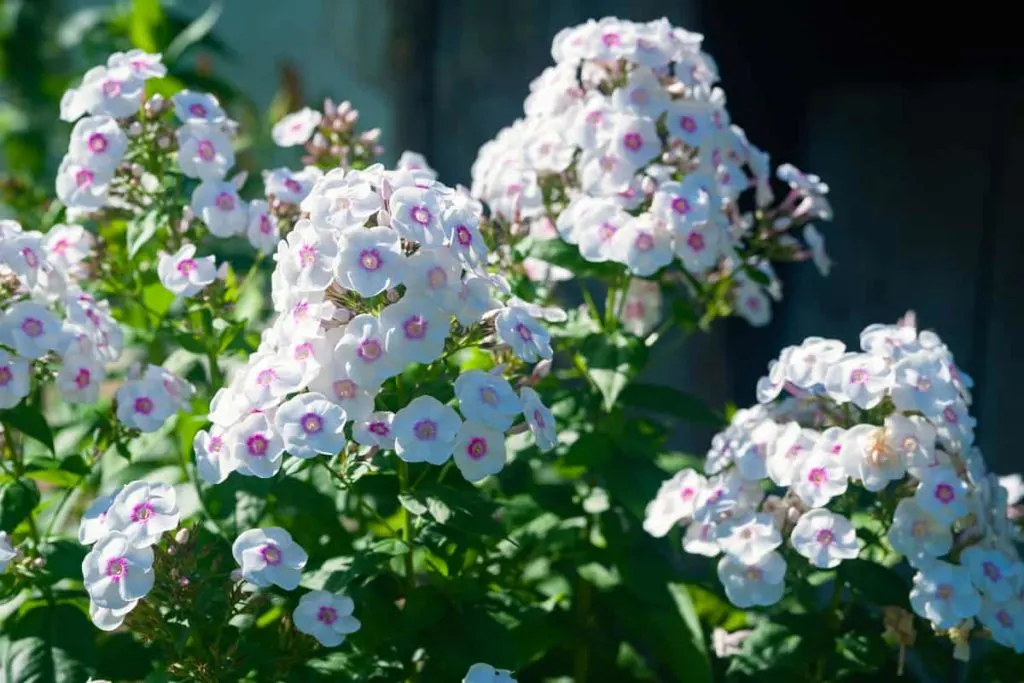
21. Salvia (Salvia)
Standout Feature: Wonderfully ornamental herb from the mint family. Salvias are incredibly useful and durable plants that don’t disappoint. Perfect for brightening up any sunny spot that needs a colorful boost.
Mature Size: 1 ½ to 5 feet tall.
Bloom Time: Late spring to early summer.
Hardiness Zone: 3 to 8.
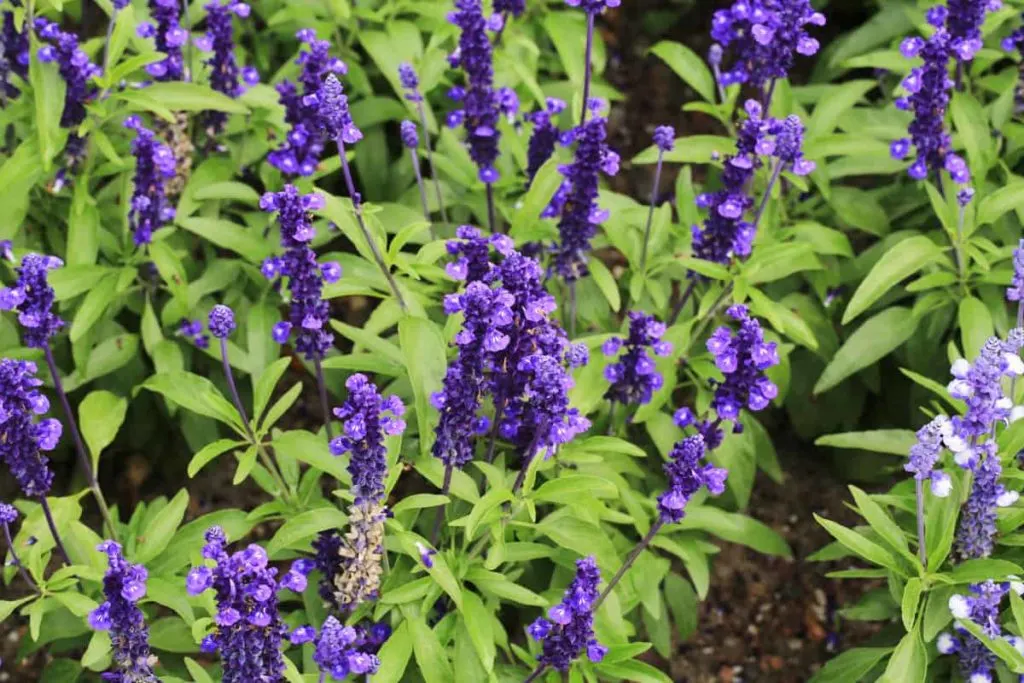
22. Sea Holly (Eryngium)
Standout Feature: Clump-forming perennial that produces out-of-this-world looking steel blue thistle-like flowerheads above a rosette of lobed dark green leaves.
Mature Size: 2 to 3 feet.
Bloom Time: All summer.
Hardiness Zone: 4 to 9.
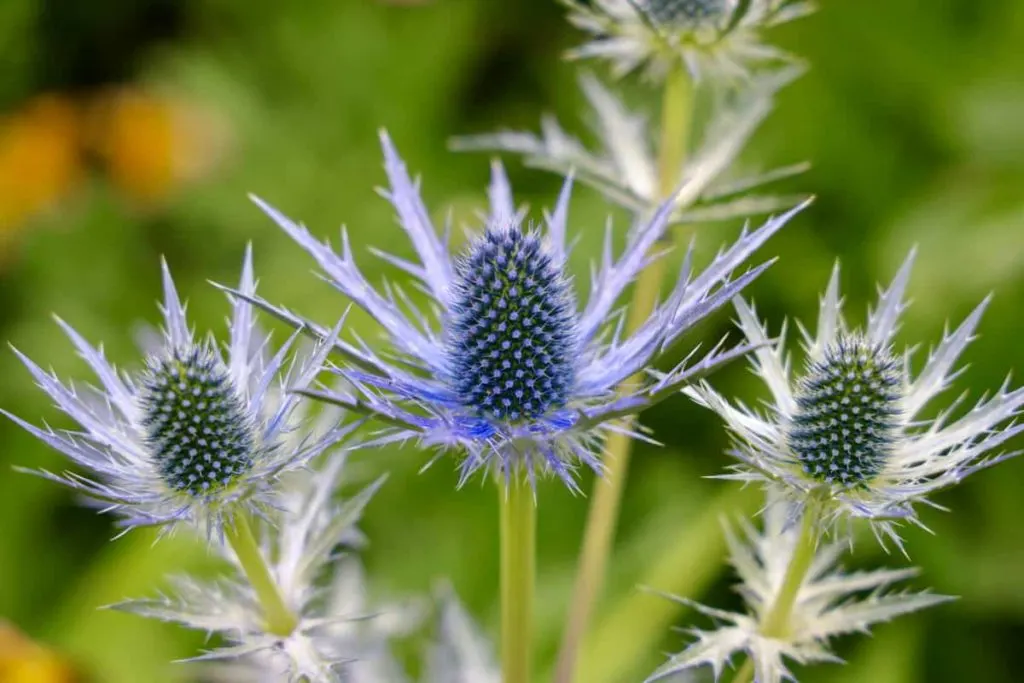
23. Stonecrop (Sedum)
Standout Feature: Drought-tolerant succulent plants that are easy to care for, produce long-lasting durable flowers perfect for drying that are equally incredibly attractive to wildlife, bees, and butterflies.
Mature Size: From 2-inch-tall groundcovers up upright varieties reaching 1 to 3 feet tall.
Bloom Time: Depending on the variety, early summer to fall.
Hardiness Zone: 2 to 9, depending on the variety.
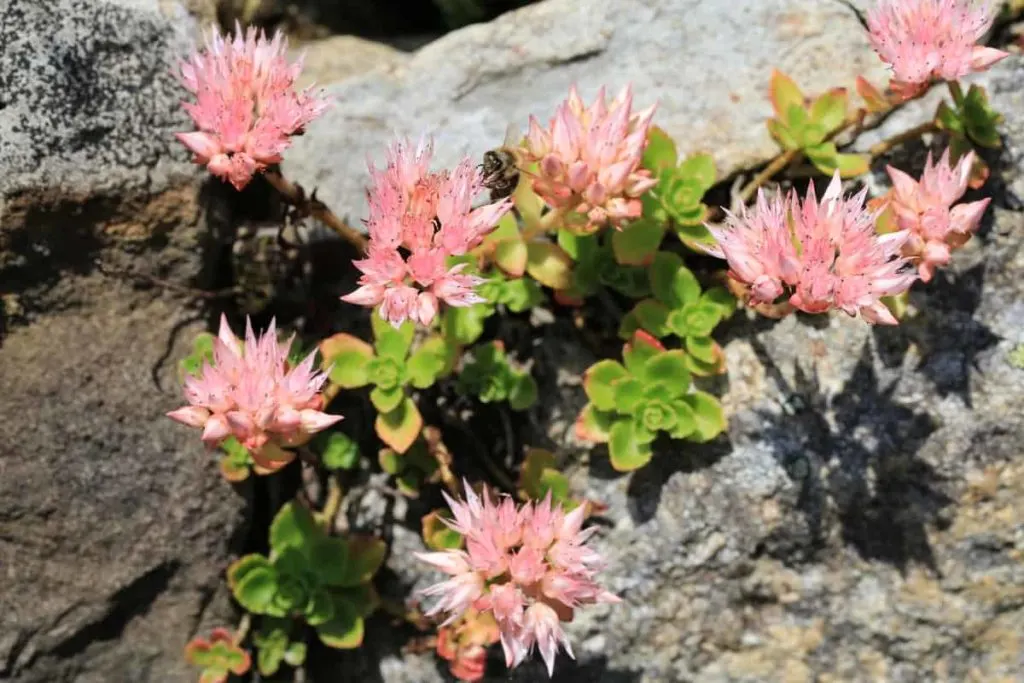
Final Takeaway
Perennials love a head start. Planting perennial flowers in the fall allows them to grow roots, get established, and become hardy. They also soak up moisture and nutrients all winter to be all set to grow their finest lush colorful growth as soon as the weather warms up next spring.
